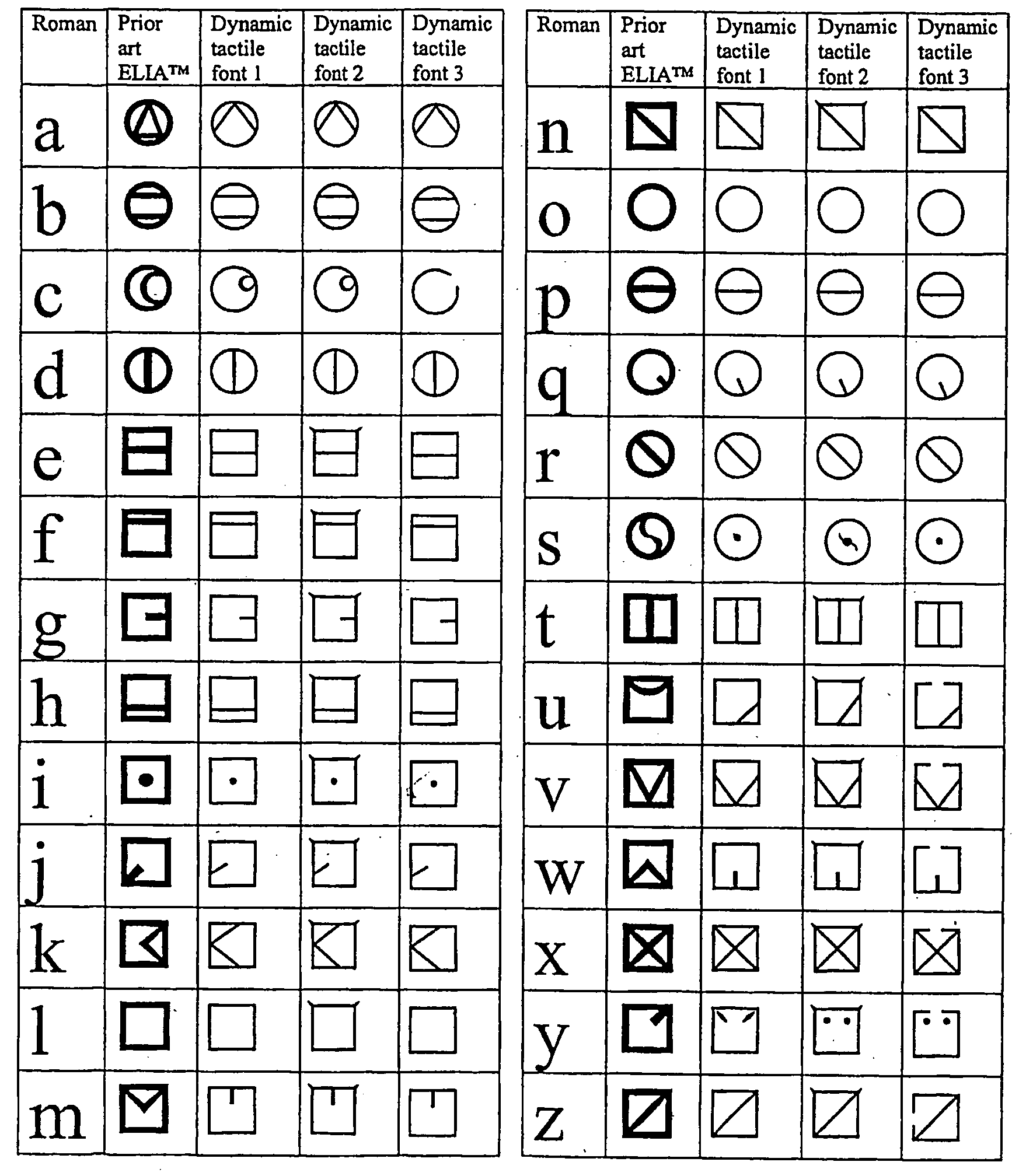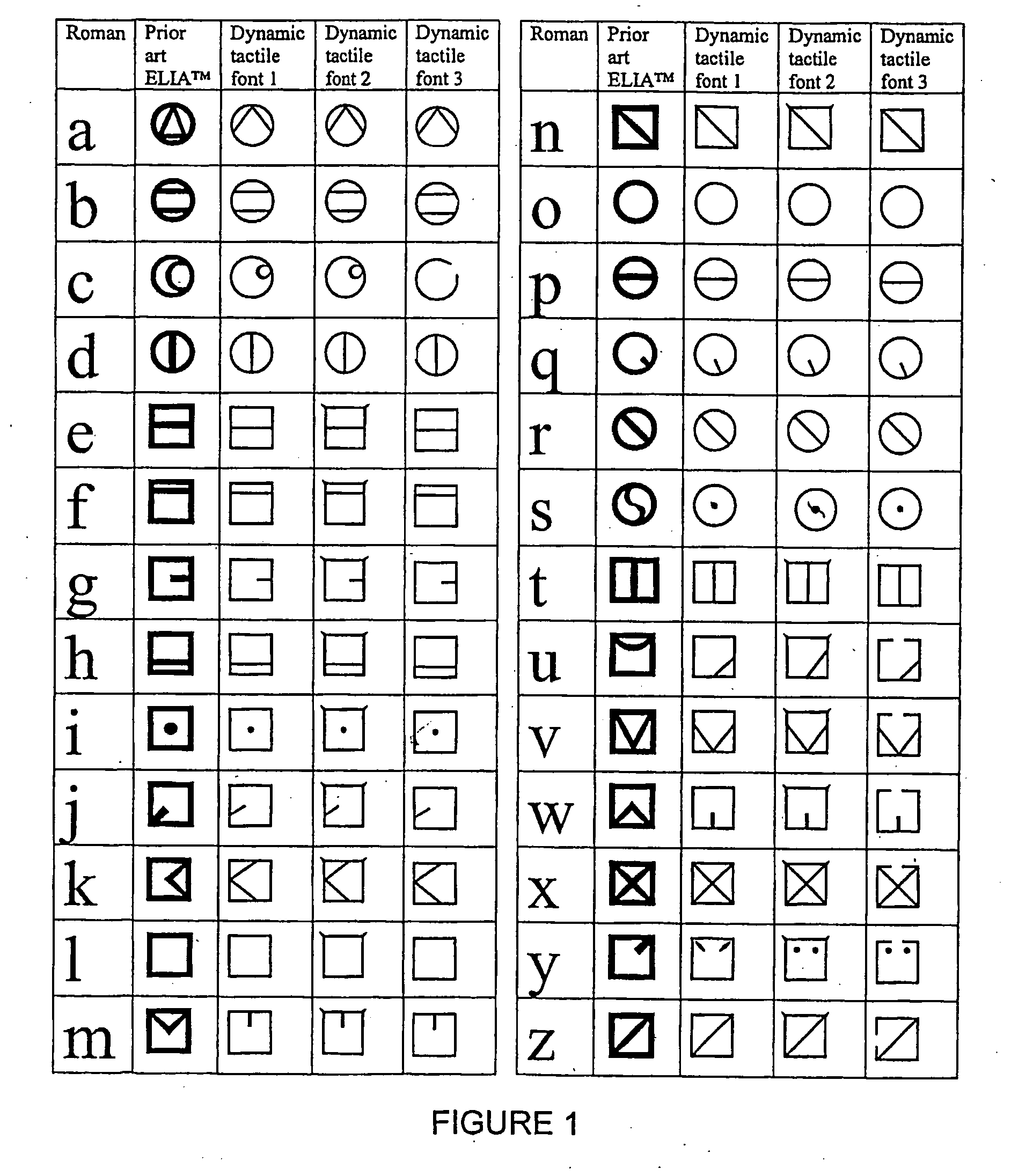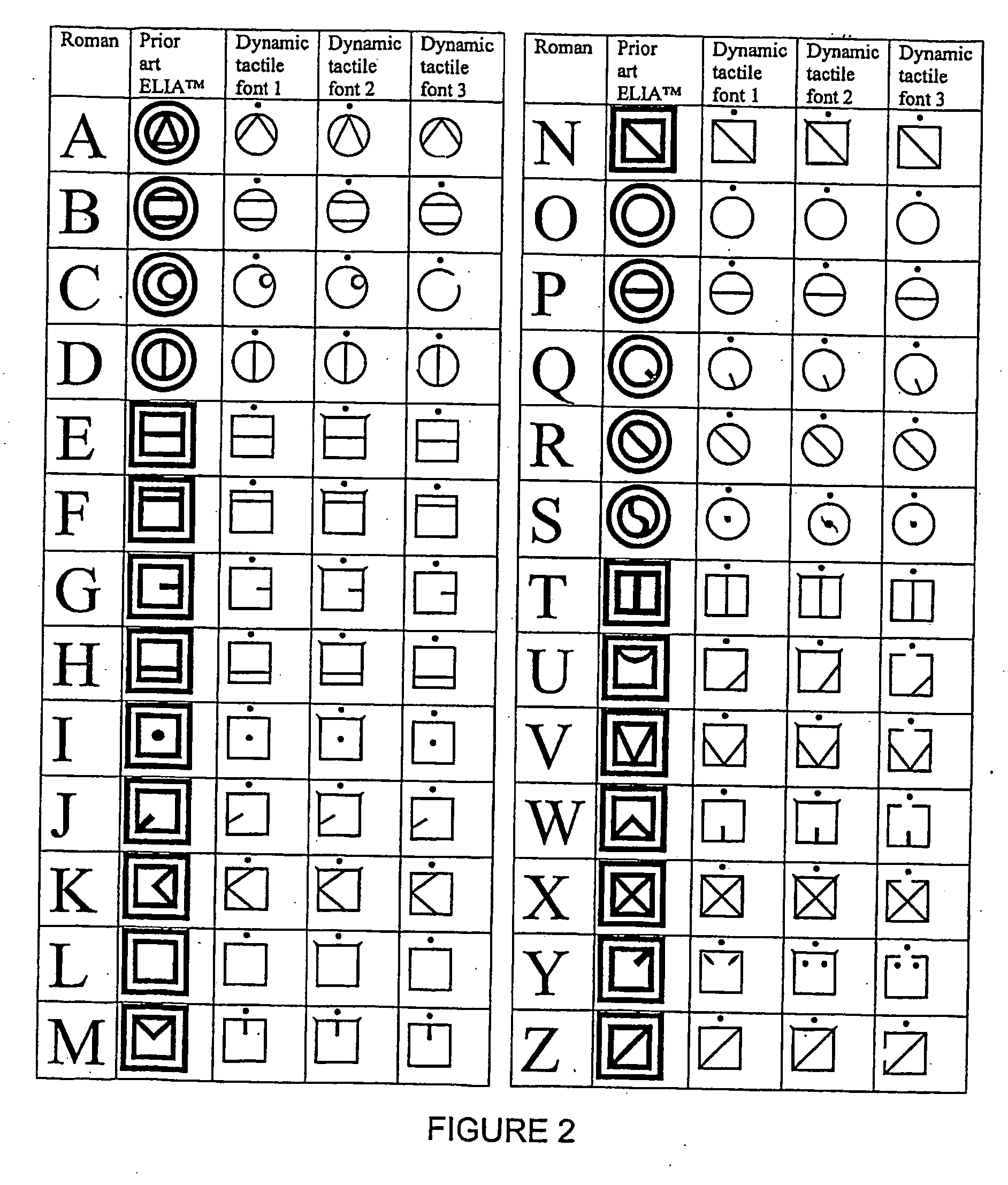Dynamic tactile and low vision fonts
a font and low vision technology, applied in the field of tactile and low vision fonts, can solve the problems of large amount of redundancy, inherently confusing, and none of these alphabets utilize a frame for easy differentiation, and achieve the effect of reducing visual and/or tactile acuity, greater accuracy and speed
- Summary
- Abstract
- Description
- Claims
- Application Information
AI Technical Summary
Benefits of technology
Problems solved by technology
Method used
Image
Examples
Embodiment Construction
[0034] All of the alphabetic and numeric symbols of the dynamic tactile font in accordance with the present invention comprise at least a frame. As in the prior art ELIA™ font, the alphabetic symbols of the dynamic tactile font in accordance with the present invention are divided into four regions, the first and third regions having circular frames and the second and fourth regions having square frames, with the frames serving as the primary key to direct the reader to a limited number of candidates, to make deciphering as swift and easy as possible; while the numeric symbols have diamond-shaped frames. Also as in the prior art ELIA™ font, the dynamic tactile font in accordance with the present invention, each of the alphabetic symbols embodies at least a physical association with its corresponding capital letter of the Roman alphabet.
[0035] The dynamic tactile font in accordance with the present invention provides three distinct areas of innovation relative to the prior art ELIA™ ...
PUM
 Login to View More
Login to View More Abstract
Description
Claims
Application Information
 Login to View More
Login to View More - R&D
- Intellectual Property
- Life Sciences
- Materials
- Tech Scout
- Unparalleled Data Quality
- Higher Quality Content
- 60% Fewer Hallucinations
Browse by: Latest US Patents, China's latest patents, Technical Efficacy Thesaurus, Application Domain, Technology Topic, Popular Technical Reports.
© 2025 PatSnap. All rights reserved.Legal|Privacy policy|Modern Slavery Act Transparency Statement|Sitemap|About US| Contact US: help@patsnap.com



